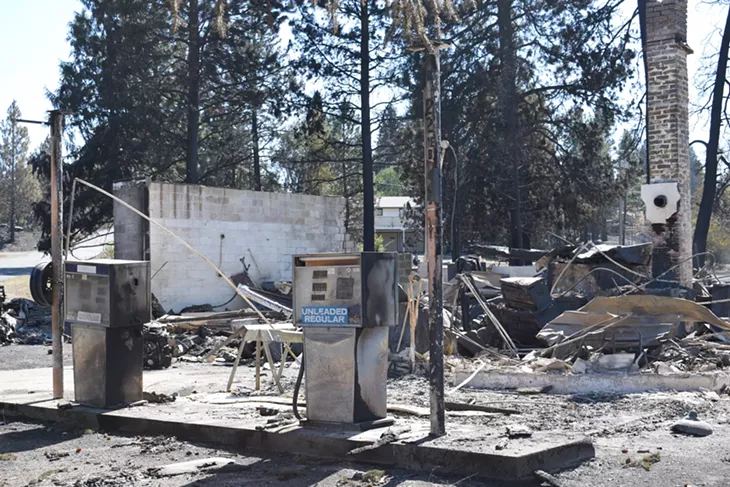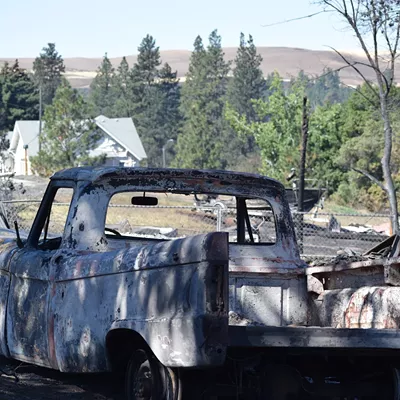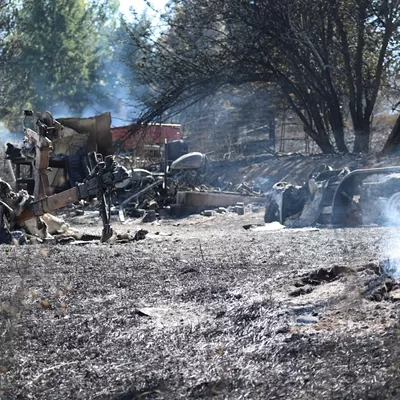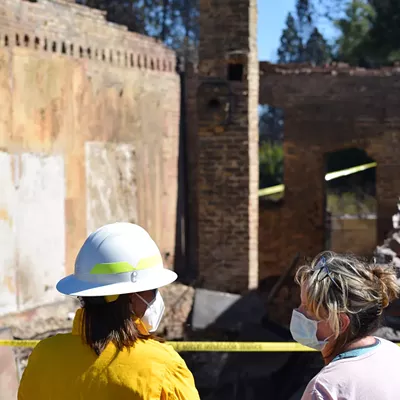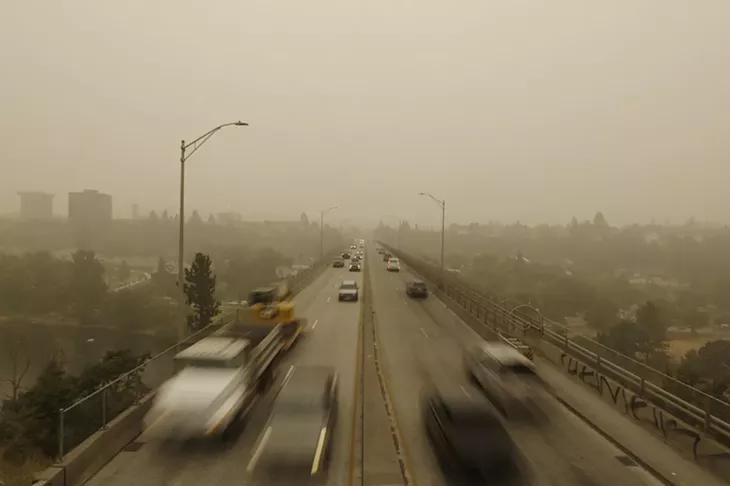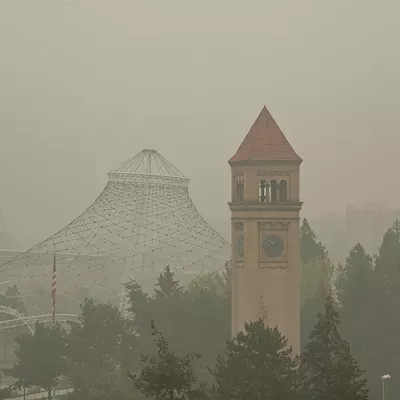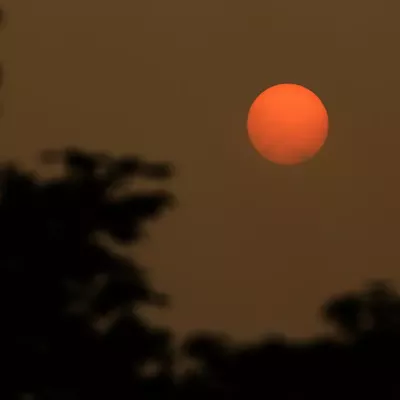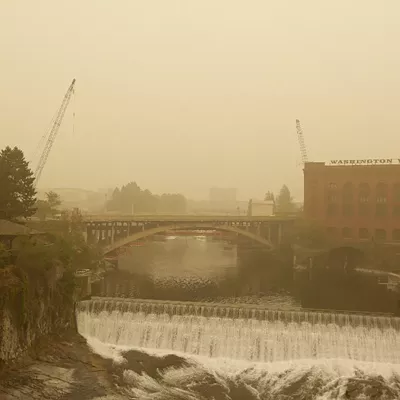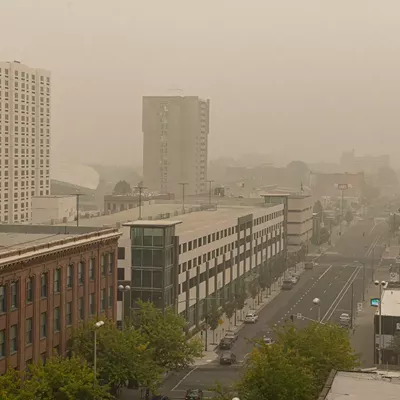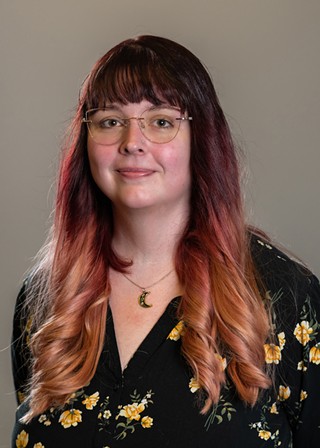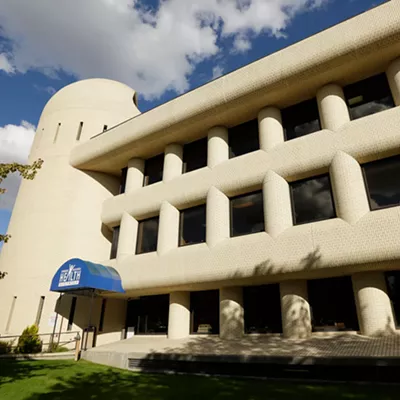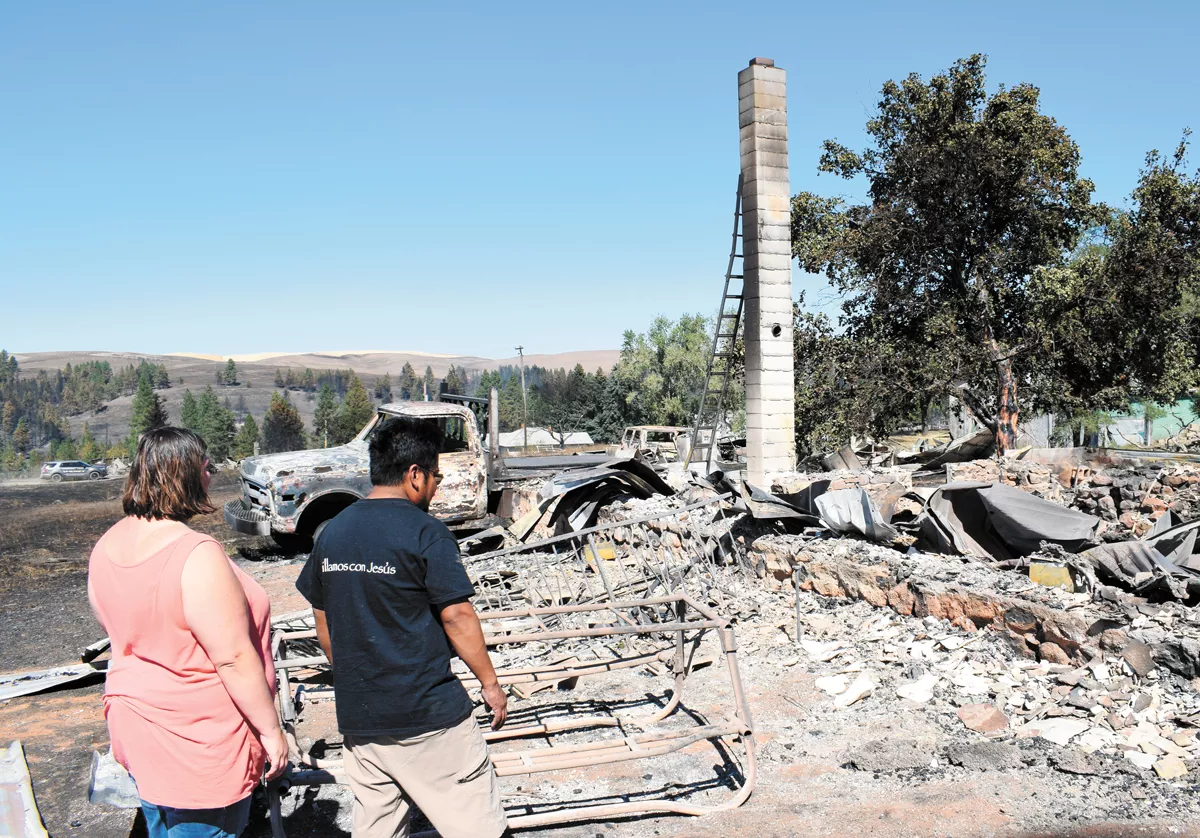
The West is being tested. Already ground zero for the United States' first case of a global pandemic this year, Washington faced more natural disasters in September, joining Oregon and California in the throes of their worst fire seasons on record.
More than 5 million acres — roughly the size of New Jersey — burned across the three states in a matter of weeks following Labor Day. Dozens of people died, unable to escape the wind-driven blazes, and smoke settled in to choke Pacific Northwest communities for days. In just 72 hours, Washington saw more than 600,000 acres burn, more than half the previous record for an entire year, set in 2015.
Record-breaking fire seasons are rapidly becoming the new normal. It's not just the dry forests of the inland and intermountain regions burning, but also the wet forests along the coast. Range and brush fires also destroyed agricultural communities like Malden in Whitman County and threatened others in Central Washington.
As with the last record fire season, and the one before that, people again want to know: What can we do to stop this?
Experts — from those who fought wildfires for decades, to those who've studied Western forest ecology — say we already know what to do, and we have for a long time. Somewhat counterintuitively, their advice is largely to let more of it burn.
That's because the largest key seems to be eliminating fuels like small trees and shrubs that have built up in the forests over the last century, whether that work takes place through timber harvesting, prescribed burning, or by managing wildfires that occur in isolated areas.
Wildfires were common on the landscape for thousands of years and harnessed by Native American tribes in the area for a variety of benefits. Some tree species in this area actually rely on fire to germinate. But European settlers came and vastly changed the fire regime, leading to some of the modern issues being brought to bear.
Even as putting out fires became a major priority last century, it's worth noting that most of our wildfires now are also caused by humans, whether that's from downed power lines, campfires, cigarettes, fireworks, arson or other manmade causes.
To reduce risks, experts also say communities need to adapt the land around their homes and towns and note that climate change needs to be acknowledged and rapidly addressed, as it's contributing to hotter, drier, deadlier fire seasons.
And until forests return to healthy conditions, it's likely going to take some massive investment in fire suppression to save lives and property.
The good news is, state and federal foresters have been working on plans to better thin the forests, craft prescribed burns and create resilient communities. But those plans need funding and support not just from politicians, but from community members concerned about everything from air quality to environmental protection. And human memories are sometimes short.
"We have got to get our leaders to realize that wildfire and forest health is not an issue that goes away once the smoke disappears," says Washington Public Lands Commissioner Hilary Franz. "It is an issue that has to be front and center until we solve it. It takes consistent, dedicated investment year after year."
Even as the state saw the death of a 1-year-old boy and the destruction of hundreds of homes this fire season, Franz expects she'll have to continue beating the drum for forest health and fire suppression investments when lawmakers return to Olympia, should she win re-election this fall.
"We don't need a task force to come together and figure out what to do. We already know what to do," Franz says. "We need our federal and state leaders to step up and invest in those plans."
But while the rain and snow may dull the memory of devastating flames for some, for people in the communities that burned down, as well as those whose homes narrowly escaped destruction, forgetting isn't an option.
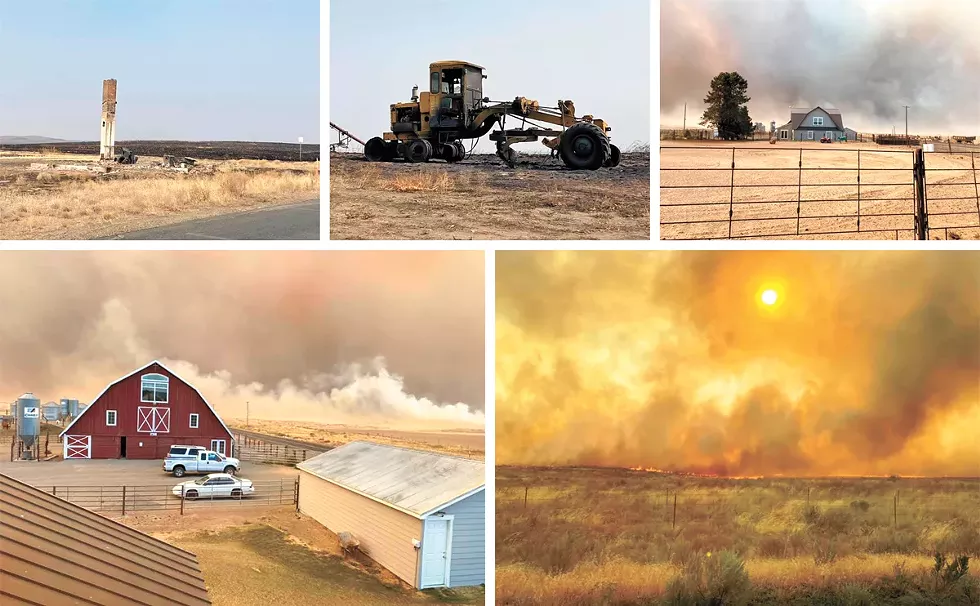
A COMMUNITY SPARED
Mikki Lamar had never slept with her shoes on before.
She'd returned to her Central Washington home in Mansfield on Sunday, Sept. 6, after a quick camping trip with her husband, Thane, and their two kids, 5-year-old Walker and 3-year-old Davis. Before heading to bed, they learned of a fire that had started about an hour away near Omak and went to sleep with plans to check on its status in the morning.
By the middle of the night, however, a warning siren was blaring through town as the fire approached the area. As they called relatives in the early morning hours telling them to throw on sprinklers, Lamar and her relatives coordinated plans to grab essentials and sentimental belongings while working to protect their homes. Many in the community started throwing down fire breaks with farm equipment, the start of what would be more than 30 hours of work battling flames for volunteer firefighters in the rural community of about 340 people.
Lamar went to her parents' farm just outside of town and helped her mom grab family photo albums out of the attic before returning together to her place in town, farther from the fire.
"It's two miles from my house, but you can see the pine trees at her house," Lamar says. "She said, 'OK, if I can see big flames on that pine tree, it means my house is gone.'"
By midday Labor Day, it became clear that the heavy dust and smoke would prevent them from leaving town. There were fires seemingly everywhere.
"The highway was closed to Bridgeport, the highway was closed to Coulee City, the highway was closed to Grand Coulee, the highway was closed to Wenatchee, the highway was closed to Chelan," Lamar says. "There were no open roads, we were almost completely surrounded by fires, so, we went, 'Oh my gosh, I guess we're going to stay here.'"
Indeed, dozens of fires had kicked up near many of the agricultural and dry forest communities throughout the state. The Cold Spring Canyon Fire in Okanogan and Douglas counties threatened Mansfield, rapidly growing that day and helping spark the Pearl Hill Fire, which burned into Bridgeport. The two fires would burn more than 175,000 acres within 24 hours and more than 410,000 acres total.
Lamar stayed in touch with one of her sisters who also lives nearby as they figured out whose house was best to wait at. Meanwhile, her dad, husband and others used farm equipment to dig dirt lines to protect the town from the worst of it.
The power went out, and so it happened that by Monday night, Lamar was napping with her shoes on as someone else listened for first responders to drive by and announce that it was time to scoop up her niece, nephew, kids and leave.
Luckily, the protection efforts worked and the town survived. Many acres of grazeland and farm and pasture structures were destroyed, along with miles of fencing, but people were safe.
Having survived the threat, the town quickly pivoted its attention to nearby Bridgeport, which was hit much harder, with about 20 homes destroyed. As vice president of Mansfield's Chamber of Commerce, Lamar helped coordinate donations of beef, potatoes, cookies and more to provide hundreds of meals at a church in Bridgeport.
Things turned out better for Mansfield than Eastern Washington's Malden, where there wasn't enough time to throw down fire lines before the town was all but completely destroyed by fire that day.
But the Labor Day fire wasn't even the first to narrowly skirt Mansfield this summer: Another blaze came dangerously close over the Fourth of July weekend. Two narrow misses in a year was unthinkable not that long ago.
"It's insane to think that in one year we've had two fire lines put around the town," Lamar says. "I still haven't unpacked our bins with our evacuation stuff, because until winter, they're gonna be in our laundry room ready to go. ... We have totes for fires now. That's a new thing here."
While the fires that affected Malden and Mansfield were vastly different than those that destroyed multiple towns in Oregon, killing at least 25 people, experts in forest fires and forest ecology say they know what led us to this point, and in many cases, what needs to change.
WHAT CAUSED THIS
"Our forests in the Pacific Northwest are just these magnificent things," says John Bailey, professor of forest engineering, resources and management at Oregon State University. "They're timber, and fiber, and money and economic engines. They're also wildlife habitat."
As a tree agriculturalist and researcher who spent time early in his career fighting wildland fires and working on prescribed burns, Bailey acknowledges the incredible power and importance of forests. They play a key role in the water cycle, they're full of recreational opportunities, and he notes that they have a basic spiritual value for many people as well.
"The forest is all those things at once, and it is also fuel," Bailey says. "We've gone through a period where we forgot about that fuel side of things. They're fuels, they're going to die and burn, and that's completely natural."
Particularly in Eastern Washington and Oregon, where dry forests have burned hundreds of thousands of acres, a few factors have contributed to reduced forest health.
First, European settlers not only stopped intentional burning by Native American tribes that had understood their benefits for thousands of years, but they also brought in livestock. A lot of livestock.
By the late 1800s and early 1900s, much of the West had been overgrazed, eliminating grasses and shrubs that once carried fires to stands of trees that would usually burn with a lower intensity every few years, creating patches on the landscape, Bailey says. So trees remained that usually would have burned.
Then, after the Big Burn of 1910 decimated about 3 million acres in North Idaho and Western Montana, killing 87 people including firefighters, the U.S. Forest Service made a commitment: They'd emphasize putting out fires wherever they popped up. By 1935 the "10 am policy" was in place, with the service committed to putting out small fires by 10 the morning after they were spotted.
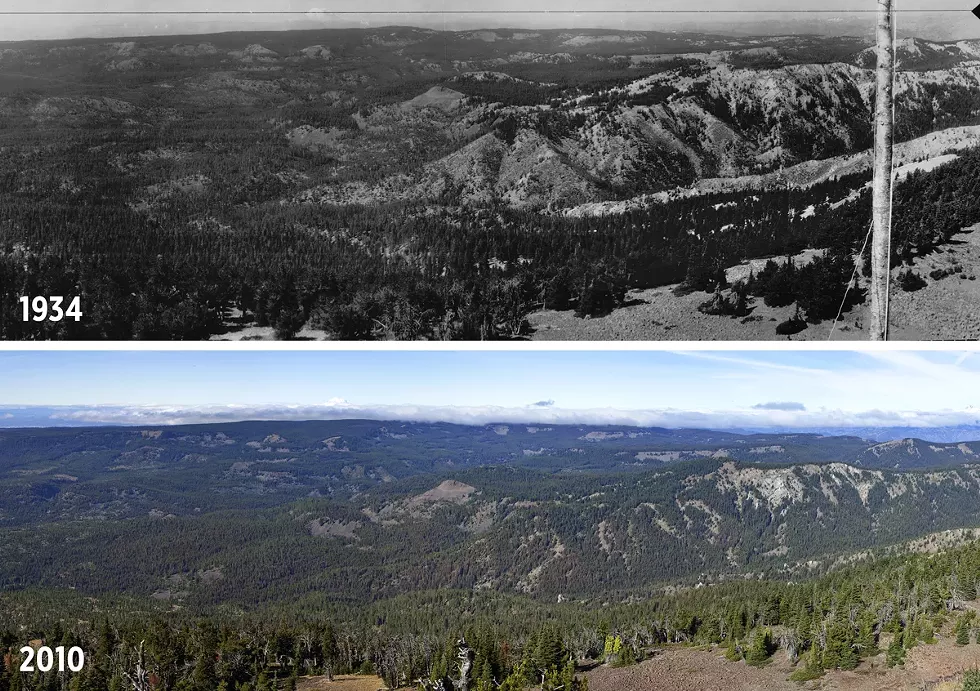
"We got really good at fire suppression," Bailey says. "After World War II we had all sorts of planes and helicopters and smokejumpers. The Smokey Bear campaign was launched and we had active fire suppression that got to be really good."
Throughout much of the 1800s and 1900s, timber was also harvested from the landscape, with an emphasis on larger trees as the more lucrative prizes to cut down across the land. But those are the very trees that can best withstand fire, which will always sweep across the western landscape in some form.
For a variety of reasons, including efforts to protect the northern spotted owl and recognize the damages of clear-cutting, timber practices slowed down into the 1980s and 1990s, leaving even more forests to grow dense and overfull.
Forests that used to stand in spread-out patches across the hillsides and mountains now connect across miles and miles of landscape. When a fire starts in an over-dense forest, it's now likely to spread farther and burn hotter, making it harder to put out.
"I'm not sure we have learned much of the lessons of the last few years, but maybe I'm a little cynical," he says. "Those of us who spend maybe too much time studying and thinking about these things, we think we have the tools for monitoring climate change and what defines a good thinning treatment, a good prescribed burning treatment."
But it feels to Bailey like most of the work now requires getting everyone at the table to agree that, "Hey, we all love trees, but it's OK to cut some trees to manage our landscape." Allowing the forest service or other landowners to harvest timber doesn't mean a return to the 1,000-acre clear-cuts of the 1950s and other abusive practices, he says.
"We actually do know better how to do this now," Bailey says. "We have to realize we're all in this together even as we may see the forest a little differently."
WASHINGTON'S PLANS
After more than 1.1 million acres burned in the state in 2015, the worst year on record to date, the state Legislature tasked the Department of Natural Resources (DNR) with laying out a 20-year plan for forest health. The goal is to assess and treat 1.25 million acres of unhealthy Eastern Washington forests by 2037.
Treatment can be through mechanical means — i.e., cutting down trees and ripping out ladder fuels like shrubs and undergrowth — or through prescribed burning.
The plan notes that overall, more than 2.7 million acres of forest are unhealthy and susceptible to insect infestations, diseases and fires in Eastern Washington. Treatments are meant to happen on 70,000 acres of forest per year across land owned by a variety of parties, including state, tribal, and federal agencies, and private industry.
In 2017, 2018 and 2019, the state tracked at least 115,985 acres of forest treatments on DNR and federal land, which doesn't include any work done on private or tribal forestland. While COVID-19 delayed some of the work expected for this year, treatment is expected to ramp up in coming years as plans for more areas are completed.
As commissioner of public lands, Hilary Franz heads up DNR and the forest health efforts.
Part of the struggle she's seen growing over the last few years of historic wildfires is simply finding enough manpower and supplies to respond to fires. In the past, Washington would often send firefighters and resources south earlier in the summer, with confidence that when Washington's fire season was in full swing, California could return the favor.
"We're seeing their fire season is now at the same time as ours, and in fact intensifying at the same time as ours," Franz says. "So there's no resources for me to be able to secure. We saw that in 2018 when we got resources from Australia. This [month] I got two planes from Canada. We should never be dependent on another country to help us."
Attacking fires on the ground (and from the air) quickly is essential, because even as fighting fires is part of what got us into this mess, now that we're here, they'll grow too large and too devastating if we don't do anything, experts say.
To offer some financial stability for those efforts upfront — because the state gets the firefighting bill one way or another — Franz supports creating a specific account for wildfire prevention and suppression that would be funded by a surcharge on insurance policies around the state. But the idea has failed to gain enough lawmaker support.
Another major lesson from the 2014 and 2015 fire seasons was that there were severe communication problems between DNR, local fire districts, and private landowners responding to fires. So the Legislature also created the position of Wildland Fire Liaison at DNR. Gary Berndt, a longtime wildland firefighter and DNR employee who'd retired in 2011, was brought back on to coordinate with local fire districts as the first person in that job.
"[The legislation] asked that I do three things: One is to assure that local fire districts were better trained, the second was better equipped, the third was more available," Berndt says.
There's an element of politics, Berndt says, as many fire districts came about because they didn't like being part of another fire district; many are subsequently underfunded. Improving those relationships included making sure people knew which radio frequencies to use, providing training and, in some cases, providing equipment.
He notes that learning from large fires can be a challenge, especially when those called to fight during the wildland season go back to their other jobs.
"What I fear happens with the tyranny of the urgent is that everybody goes out and spends their summer chasing fires and suppressing, doing the work that needs to be done, and their routine jobs don't get done, and as soon as the fire goes away, it gets put away," Berndt says. "We don't always take the time to very diligently take a look at what we just did and see if we got the lessons learned."
But after a few years of building stronger relationships, the current Wildland Fire Liaison Allen Lebovitz says he thinks the state has fared slightly better, even in this bad fire year.
"Local fire districts are the best resources for initial attack because they're there and will respond quicker. Hopefully this year we've seen the results," he says. "Even though we've seen more large fires this year, there are far, far more we caught early and stopped because of how the fire districts and DNR have learned to work together."

HYPERLOCAL PLANNING
The state has also started planning at a very detailed level how to prepare and defend the areas most prone to fire in Eastern Washington. Rather than just look for forest health benefits from thinning or burning, lawmakers recently decided that work should be prioritized based on the benefits for fighting wildfires.
"We've seen where fires are happening and likely to keep happening," Franz says. "We would go into those communities most threatened and build fire breaks, so they're already built before the fire starts."
So this year, Chuck Hersey, forest health planning manager with DNR, has been working with a team on three pilot programs for high-risk communities: Leavenworth, Methow Valley and Cle Elum.
To figure out how to align forest health and wildfire response, planners mapped out areas they call PODs "where there are either natural features like a ridgeline, or a road where if you were doing suppression work or whatever you might use that feature to stop a fire or to bring fire personnel in to do work."
Within those PODs, the team focused on even smaller parcels, prioritizing those based on where people live and other important resources.
The idea is the pilot plans being finalized this fall will inform leaders in those areas where to focus their limited resources to best fortify their community. A key next step is figuring out how to tell each of the landowners within those areas that treatment on their property is especially important, Hersey says.
"I think there's power in connecting a landowner to help them understand how their property fits into the bigger picture of the landscape," Hersey says. "There's a lot of power there."
There's also a lot of economic opportunity in that work, Franz says.
"We're dealing with an economic crisis from COVID, it is a massive crisis," she says. "We have huge unemployment, and these are communities that have had huge unemployment for a long time."
In some areas, it may be hard to make timber harvest pencil out, as local mills may have shuttered, and trucking costs can make or break a timber project, foresters say. But there are opportunities such as cross-laminated timber (CLT), which can use small and diseased trees to create sustainable timber products. Spokane and Stevens County both saw CLT manufacturers open in recent years.
Plus, paying to treat forests now saves money on fighting fires in the future, Franz says.
"We can be putting people to work in the forest, removing the dead and diseased trees, and enlisting those contractors who've got their dozers and tractors and they know the community, their landscape, the landowner," Franz says. "They could help us, the global us, Washington state, build that resiliency."
WHAT YOU CAN DO
While much of the big picture planning and funding will need to be decided at the state and federal levels, homeowners and communities can protect themselves, too.
Berndt, the retired wildland fire liaison, says that after some bad fires in the early 2000s, he and others recognized that Roslyn, Washington, was particularly at risk of a devastating wildfire. The community near Cle Elum (where Berndt was mayor for 16 years) used grants to clear out defensible space around the town and individual homes. But that work needs to be maintained regularly in order to keep the benefits in place, Berndt notes.
The same goes for steps taken around individual homes.
Al Murphy has worn many hats, but significantly he served as the district ranger in Chelan for 13 years, and he also worked as an incident commander for the U.S. Forest Service's firefighting efforts.
Though retired, Murphy has done a lot of work with master gardeners near his home in Douglas County to educate regional leaders and the public about fire-safing their properties. Nationally, the Firewise program provides recommendations like removing fuels up to 200 feet out from your house and creating zones that can help slow a fire and reduce the spread, Murphy says.
Typically, people fixate on the 5-foot zone that's recommended around the base of your home, where it's best not to have things that will catch fire, like beauty bark.
"That doesn't mean you can't have pretty flowers there," Murphy says. "You can have wonderful flowers there or crushed rock, or concrete. This home ignition zone does not have to be a stark, spartan type of environment."
The key is to avoid dangerously dry plants. Murphy points to cheatgrass and arborvitae as two of the worst possible things to have on the landscape near a home for their extreme fire potential. Counties should consider removing cheatgrass and replanting native species that are less likely to create tall, hot flames, he says.
Installing fire-resistant siding and roofing is also a big help.
As part of the bigger picture, Murphy also points to how closely homes are built together as a risk factor. In Paradise, California, which burned to the ground in 2018 with the Camp Fire that killed 85 people, many house fires were started as they spread through radiant heat, jumping 14 to 18 feet from home to home.
"That's a zoning thing that county commissioners or the planning commission has to deal with," Murphy says. "I have not been to Malden, but I would guess that was the case there, too."
"We do need to deal with some smoke impacts from prescribed fire to avoid greater smoke impacts from events like we're dealing with now."
Perhaps the most important thing, Murphy says, is maintaining interest in whatever safety measures you choose to take.
"People are very interested in doing Firewise stuff for two years following the big one," Murphy says. "Come year three, there's no desire — the priorities, the interest is gone."
Murphy also suggests that prescribed burning needs to be happening on a larger scale, rather than amounting to removing a postage stamp from a football field. But there's little incentive for agencies to risk prescribed burns unless they're absolutely certain conditions are perfect.
Among the many factors to consider with a prescribed burn are air quality standards that restrict the amount of smoke that can be intentionally released into the air.
"So now that limits my burning days to three or four days a year, when I have an unstable atmospheric condition to pump the smoke out of here," Murphy says. "Our whole paradigm's gotta shift."
He suggests one solution could be purchasing and providing air purifiers for the most at-risk populations to prevent serious health impacts and to allow larger burns.
"We do need to deal with some smoke impacts from prescribed fire to avoid greater smoke impacts from events like we're dealing with now," Wildland Fire Liaison Lebovitz agrees.
Because even if controlled burns took out 5,000 acres or 10,000 acres, they still wouldn't compare to the 400,000 acres burned in Central Washington last month, Murphy says.
And for now, the hard truth is that massive fires are likely to continue happening, professor Bailey says.
"I don't think there's a future without fire and smoke, and as a matter of fact I think we'll have more of this," Bailey says. "For me, it's clear the choice is to manage our fuels. ... Because the areas that burned this year will burn again." ♦
ELECTION 2020
Sue Kuehl Pederson is the Republican challenger to incumbent Democrat Hilary Franz in the race for Commissioner of Public Lands.Kuehl Pederson, who retired as the power manager at Grays Harbor Public Utility District in 2007, has also managed fisheries and natural resources, and worked as an environmental analyst and power analyst, among other jobs.
Kuehl Pederson says she thinks the fire problem is only getting worse.
"It's an emergency, it deserves an emergency approach," Kuehl Pederson says. "I don't want to just hire more people at DNR, I want to make jobs for people who are interested in helping clean out the forests, clean up the brush, and do a little logging. I think we need clear-cuts, we need some spaces again in our forests to slow the fires."
Kuehl Pederson questions why a proposal to provide hundreds of millions of dollars in bonds to DNR wasn't promoted last year, and questions how firefighting is paid for in the state.
"If all the landowners are not preventing or taking measures to prevent fires, then isn't that a bit unfair for the taxpayer?" Kuehl Pederson asks. "I want to make sure that firefighting costs are fair to our citizens."
Franz, meanwhile, practiced as an environmental attorney and also served on the Bainbridge City Council and as the director of the sustainable growth nonprofit Futurewise before being elected as public lands commissioner in 2016. She regularly calls for investment in fire prevention to save money on fire suppression in the long run and made the largest budget ask in agency history in 2018 when she asked for $55 million. That's a fraction of the $153 million a year the state is now spending on average to fight fires, she says.
"The question is if we're going to pay to react in the face of smoke and flame to put the fires out," Franz says, "or pay to be proactive, pay to make our communities and forests more resilient."

